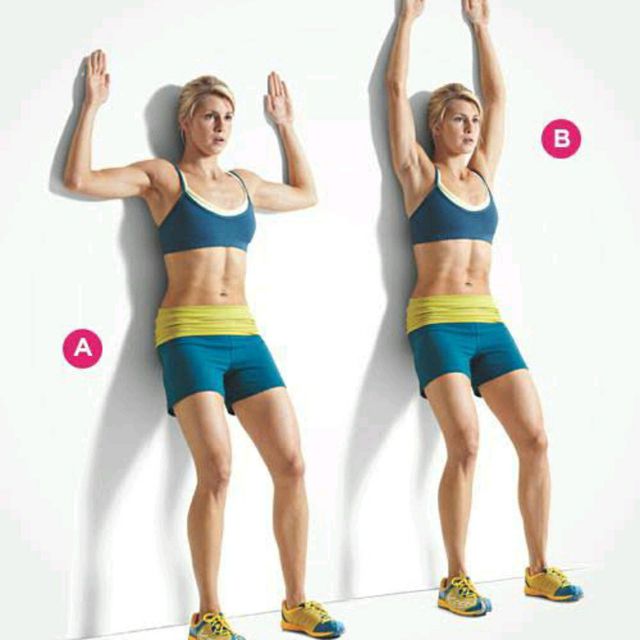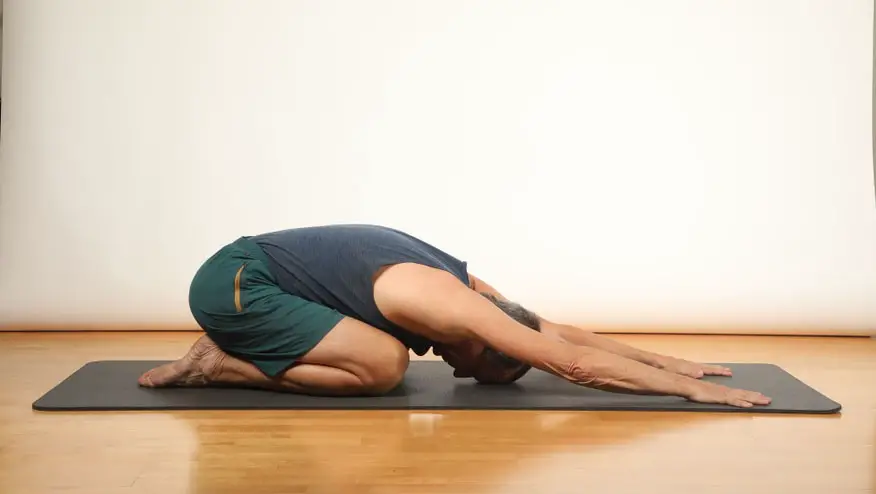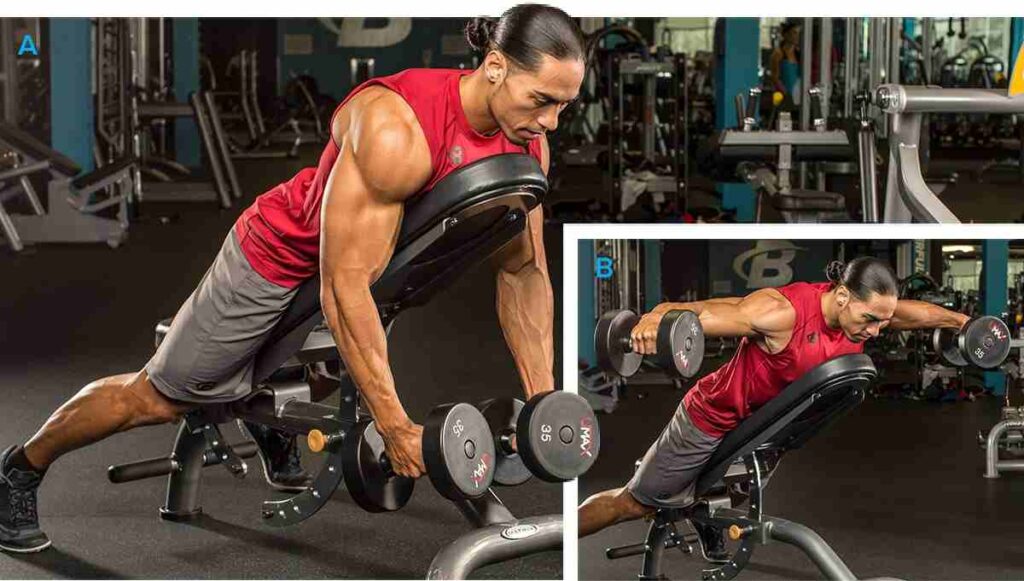Introduction
Welcome to the ultimate guide to achieving optimal shoulder health through the power of the serratus anterior stretch. In today’s fast-paced world, maintaining our physical well-being is more critical than ever, and one area that often goes overlooked is our shoulders. These remarkable joints enable us to perform a wide range of daily activities, from lifting groceries to reaching for objects on high shelves. However, without proper care and attention, shoulder issues can arise, hindering our quality of life.
One of the keys to ensuring strong, stable, and mobile shoulders lies in the serratus anterior muscle, a hidden gem in our upper body anatomy. Located beneath the shoulder blades, the serratus anterior plays a pivotal role in maintaining shoulder health and preventing injuries. Neglecting this muscle can lead to problems like shoulder pain, limited mobility, and poor posture.
SHOP FOR THE RESISTANCE BAND ON AMAZON
In this comprehensive guide, we will delve deep into the world of serratus anterior stretches. We’ll explore what this muscle is, why it matters, and how to perform effective stretches to keep it in top shape.
Understanding Your Serratus Anterior Muscle
When it comes to shoulder health and functionality, there’s one muscle that often doesn’t get the attention it deserves—the serratus anterior. This often-overlooked muscle plays a crucial role in maintaining stable and mobile shoulders, making it essential for everyday activities and sports. Let’s dive deep into understanding the serratus anterior muscle, its location, function, and why it’s important for you.
Location of the Serratus Anterior
The serratus anterior is a fan-shaped muscle located on the lateral or outer surface of your ribcage. It extends from the first rib to the ninth rib and inserts along the scapula or shoulder blade. This unique positioning allows the serratus anterior to have a significant impact on your shoulder’s movement and stability.
Function of the Serratus Anterior
The serratus anterior muscle might not be as well-known as some of its neighbors, like the deltoids or biceps, but it serves several crucial functions:
- Scapular Stabilization: One of its primary roles is to stabilize the scapula against the ribcage. This stabilization is crucial for maintaining proper shoulder mechanics during various movements.
- Shoulder Blade Protraction: The serratus anterior assists in protracting or moving the shoulder blade forward. This action is essential for reaching, pushing, and punching movements.
- Upward Rotation: When you raise your arm overhead, the serratus anterior helps upwardly rotate the scapula. This action is essential for movements like lifting weights, throwing, and reaching for objects on high shelves.
- Assisting in Breathing: The serratus anterior also plays a role in breathing. It helps expand the ribcage during deep inhalation by elevating the ribs.
Importance of a Healthy Serratus Anterior
Now that you understand what the serratus anterior does, let’s understand why it’s crucial for your overall well-being:
- Shoulder Stability: A strong and well-functioning serratus anterior contributes to shoulder stability. This can prevent injuries during activities that involve repetitive shoulder movements, such as swimming, tennis, or weightlifting.
- Improved Posture: The serratus anterior helps maintain proper posture by stabilizing the scapula and preventing it from winging (lifting off the ribcage). This can lead to better alignment and reduced risk of conditions like thoracic outlet syndrome.
- Enhanced Mobility: When your serratus anterior is flexible and strong, you’ll enjoy better shoulder mobility. This means you can perform a wider range of movements with ease and less discomfort.
In summary, the serratus anterior muscle might not be as famous as some other muscles, but it plays a vital role in shoulder stability, mobility, and overall functionality. Whether you’re an athlete looking to enhance your performance or someone interested in maintaining everyday shoulder health, understanding and caring for your serratus anterior is essential.
What is Serratus Anterior Stretch?
A serratus anterior stretch is a specific exercise or stretching technique designed to target and improve the flexibility and mobility of the serratus anterior muscle. The serratus anterior is a fan-shaped muscle located on the sides of your ribcage, just beneath your armpits. It plays a crucial role in stabilizing and moving the shoulder blades (scapulae).
When you perform a serratus anterior stretch, you’re primarily focused on elongating and relaxing this muscle to ensure it functions optimally. Stretching the serratus anterior can help alleviate tension, improve posture, and enhance shoulder mobility. It’s particularly beneficial for individuals who engage in activities that require overhead arm movements, such as athletes, weightlifters, or anyone seeking to maintain healthy shoulder function.
SHOP FOR THE FOAM ROLLER ON AMAZON
The serratus anterior stretch typically involves extending your arms or gently manipulating your shoulder blades to create tension and then holding this position for a specific duration. There are several variations of this stretch, and the choice of which one to use may depend on your individual needs and comfort level.
Types of Serratus Muscle Stretching
Stretching the serratus anterior muscle is essential for maintaining shoulder health and mobility. There are several types of serratus muscle stretches that can help target and improve this muscle’s flexibility and function. Here are some effective serratus muscle stretching techniques:
Wall Slide Stretch

- Stand with your back against a wall.
- Keep your arms at shoulder height, elbows bent at 90 degrees, and your palms facing forward, touching the wall.
- Slowly slide your arms upward along the wall while maintaining contact between your arms and the wall.
- Go as far as you comfortably can without arching your lower back.
- Hold the stretched position for 15-30 seconds and repeat several times.
Serratus Anterior Ball Roll

- Lie on your back with your knees bent and feet flat on the floor.
- Hold a small exercise ball or foam roller between your hands, arms extended overhead.
- Gradually lower your arms and the ball toward the floor while keeping your lower back in contact with the ground.
- Once you feel a stretch in your serratus anterior, hold for 15-30 seconds.
- Return to the starting position and repeat for multiple reps.
Child’s Pose Stretch

- Begin in a kneeling position on the floor.
- Sit back onto your heels and extend your arms forward on the ground.
- Keep your palms flat on the floor and let your chest sink toward the ground.
- This stretch helps elongate the serratus anterior and can relieve tension in the shoulders.
Serratus Anterior Self-Massage
- Use a massage ball or foam roller to target the serratus anterior.
- Lie on your back and place the massage ball or foam roller under your armpit area where the serratus anterior is located.
- Apply gentle pressure and roll the ball or roller back and forth to release tension.
- Be cautious not to put excessive pressure on sensitive areas.
Partner Assisted Stretch

- Sit or stand with a partner.
- Extend one arm out in front of you at shoulder height.
- Have your partner place their hand against your extended hand and gently push your arm backward, creating a stretch in the serratus anterior.
- Communicate with your partner to ensure the stretch is comfortable and controlled.
SHOP FOR THE EXERCISE MAT ON AMAZON
Remember to perform these stretches with proper form, focusing on slow, controlled movements. Consult with a healthcare professional or fitness expert if you have any specific concerns or injuries related to your serratus anterior muscle, as they can provide personalized guidance and recommendations for your stretching routine.
Other Exercises for Shoulder Health
In addition to serratus anterior stretches, there are several other exercises and stretches you can incorporate into your fitness routine to promote overall shoulder health. These exercises target different muscles and aspects of shoulder mobility and stability, creating a well-rounded approach to keeping your shoulders strong and injury-free. Let’s explore some of these exercises:
1. Rotator Cuff Exercises:
- External Rotation: Using a resistance band or light dumbbell, perform external rotation exercises to strengthen the rotator cuff muscles.
- Internal Rotation: Similarly, internal rotation exercises help balance the strength in your rotator cuff and prevent imbalances that can lead to injury.
2. Shoulder Mobility Exercises:
- Arm Circles: Perform controlled arm circles in both forward and backward directions to improve shoulder mobility.
- Wall Angels: Stand against a wall and mimic the motion of angels’ wings to enhance shoulder mobility and posture.
3. YTWL Exercises:
- Y’s: Lie face-down on an incline bench or on the floor with arms extended overhead in a Y-shape. Lift your arms while squeezing your shoulder blades together.
- T’s: Similarly, perform T’s with your arms extended straight out to the sides.
- W’s: Bend your elbows at 90 degrees and perform W’s by retracting your shoulder blades.
- L’s: Create an L-shape by bending your elbows at 90 degrees and lifting your arms.
4. Overhead Press:
- Using dumbbells or a barbell, perform overhead presses to strengthen the deltoid muscles that support shoulder movement.
5. Scapular Retraction Exercises:
- Face Pulls: Use a resistance band or cable machine to perform face pulls, focusing on retracting your shoulder blades.
- Rowing Exercises: Rows, whether with a barbell, dumbbells, or a rowing machine, help strengthen the upper back and improve scapular retraction.
6. Stretching and Mobility Work:
- Incorporate regular stretching and mobility work for the entire shoulder girdle, including the chest, upper back, and neck.
7. Yoga and Pilates:
- These practices emphasize overall body awareness and can greatly contribute to shoulder health through various poses and exercises.
8. Bodyweight Exercises:
- Push-ups, dips, and planks can all help improve shoulder stability and strength without the need for equipment.
9. Massage and Foam Rolling:
- Self-massage techniques and foam rolling can help release tension in the shoulders and improve circulation to aid recovery.
Remember, it’s crucial to maintain proper form and technique when performing these exercises to prevent injury. Start with light weights or resistance bands if you’re new to these movements and gradually increase the intensity as your shoulder strength and stability improve.
Precautions and Tips
Taking precautions and following some essential tips while performing serratus anterior stretches is crucial to ensure your safety and maximize the benefits of these exercises. Here are some important considerations:
Precautions:
- Consult a Healthcare Professional: If you have a pre-existing medical condition, a history of shoulder injuries, or any doubts about your suitability for serratus anterior stretches, it’s wise to consult a healthcare professional or a physical therapist before starting any new exercise routine.
- Warm-Up: Always warm up your body before performing any stretching exercises. Engaging in light cardiovascular activity for 5-10 minutes can help increase blood flow to your muscles and reduce the risk of injury.
- Start Slowly: If you’re new to serratus anterior stretches, start with beginner-friendly variations and gradually progress to more advanced ones. Overstretching or pushing too hard too soon can lead to muscle strain.
- Proper Form: Pay close attention to your form while performing the stretch. Ensure that your movements are controlled and precise. Poor form can lead to ineffective stretching and potential injury.
- Pain vs. Discomfort: While you may feel some discomfort during stretching, it should never be painful. If you experience pain, stop immediately and reassess your technique. Pushing through pain can cause injury.
- Breathing: Maintain steady and controlled breathing throughout the stretch. Avoid holding your breath, as it can lead to tension and decreased flexibility.
Tips:
- Consistency is Key: To see meaningful improvements in shoulder health and mobility, incorporate serratus anterior stretches into your daily or weekly routine. Consistency will yield the best results.
- Balance with Antagonist Muscles: To maintain shoulder stability and prevent muscle imbalances, include exercises that target the antagonistic muscles, such as the rhomboids and middle trapezius. This helps create a well-rounded shoulder workout.
- Stretch Bilaterally: Stretch both sides of your body equally to prevent muscle imbalances. Pay equal attention to your left and right serratus anterior muscles.
- Use Props: Depending on your flexibility and comfort level, you can use props like foam rollers, yoga blocks, or resistance bands to assist with certain serratus anterior stretches. These props can help you ease into the stretches and improve your form.
- Listen to Your Body: Your body knows best. If you experience discomfort beyond a gentle stretch, or if you feel that a particular stretch isn’t suitable for you, don’t hesitate to modify or skip it.
- Post-Stretch Cool Down: After completing your serratus anterior stretches, perform a cool-down routine that involves gentle shoulder movements to restore your muscles to their resting state.
SHOP FOR THE MASSAGE BALL ON AMAZON
Incorporating these precautions and tips into your serratus anterior stretching routine will help you stay safe and make the most of these exercises. Always prioritize your well-being and adjust your approach as needed to achieve the best results.
FAQs
Q 1. How often should I do serratus anterior stretches?
Ans. It’s recommended to incorporate serratus anterior stretches into your regular fitness routine. Aim for 2-3 sessions per week, with 2-3 sets of each stretch during each session. Consistency is key to seeing improvements in shoulder health.
Q 2. Can serratus anterior stretches help prevent shoulder injuries in athletes and active individuals?
Ans. Yes, incorporating serratus anterior stretches into your warm-up or cool-down routine can help improve shoulder stability and reduce the risk of common shoulder injuries, such as rotator cuff strains and shoulder impingement.
Q 3. Are serratus anterior stretches suitable for people of all fitness levels?
Ans. Yes, serratus anterior stretches can be modified to accommodate various fitness levels. Beginners can start with basic stretches, while more advanced individuals can incorporate advanced variations to challenge themselves.
Q 4. Is it normal to feel discomfort when performing serratus anterior stretches?
Ans. It’s normal to feel a mild stretching sensation or discomfort when performing these stretches, but you should not experience pain. If you feel pain, stop immediately and reassess your form. Consult a fitness professional or physical therapist if discomfort persists.
Q 5. How long does it take to see noticeable improvements in shoulder mobility and strength with serratus anterior stretches?
Ans. The timeline for improvements can vary from person to person. With consistent practice, some individuals may notice positive changes in a few weeks, while others may take longer. Patience and regular practice are essential.
Q 6. Can serratus anterior stretches help alleviate symptoms of conditions like winged scapula?
Ans. Yes, serratus anterior stretches are often recommended as part of the treatment for conditions like winged scapula, as they help improve the function and stability of the shoulder blades. However, it’s essential to consult a healthcare professional for a comprehensive treatment plan.
Conclusion
In conclusion, understanding and incorporating serratus anterior stretches into your fitness routine is a pivotal step towards achieving and maintaining healthy shoulders. The serratus anterior muscle plays a crucial role in shoulder stability and mobility, and by regularly performing these stretches, you can prevent injuries, improve posture, and enhance your overall quality of life.
Now, armed with this knowledge, it’s time to take action. Prioritize your shoulder health by incorporating serratus anterior stretches into your daily or weekly exercise routine.

Good day, and welcome to Fitthour. My name is Shubham Vijay, and I am a certified personal trainer and nutrition coach with 6 years of experience in the fitness industry. At Fitthour, we specialize in types of training, such as strength training, cardio, or HIIT, and our mission is to help clients achieve their fitness goals and improve their overall health.




